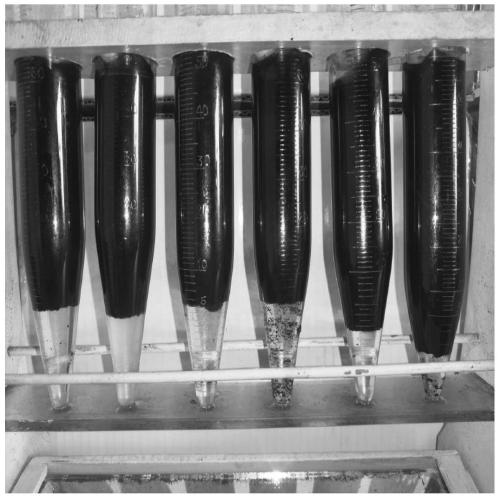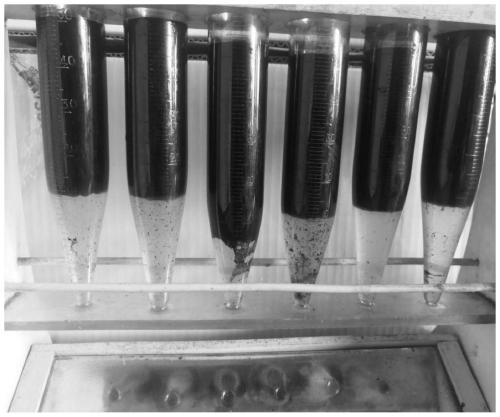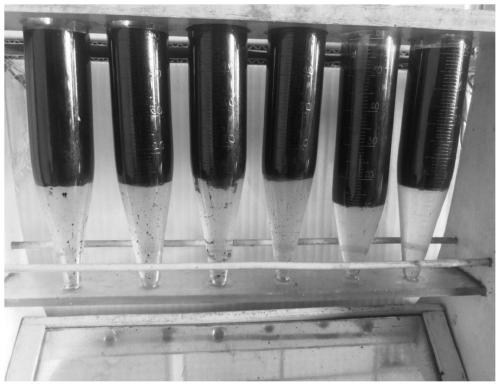Preparation method of demulsifier for inhibiting oil-water intermediate transition layer
A technology of demulsifier and transition layer, which is applied in the field of preparation of demulsifier, can solve the problem that oil field production cannot be well satisfied, and achieve the effect of promoting demulsification effect, high surface activity and strong hydrophilic performance.
- Summary
- Abstract
- Description
- Claims
- Application Information
AI Technical Summary
Problems solved by technology
Method used
Image
Examples
preparation example Construction
[0021] The invention relates to a preparation method of a demulsifier for suppressing an intermediate transition layer between oil and water. The general structural formula of the demulsifier is as follows:
[0022]
[0023] in:
[0024]
[0025] Described preparation method comprises the steps:
[0026] In the first step, put quantitative isopentenol and catalyst potassium hydroxide into a high-temperature and high-pressure reactor to seal, and the amount of catalyst potassium hydroxide is 0.2% to 0.25% of the total material mass in the high-temperature and high-pressure reactor; the method of purging with nitrogen Replace the air in the kettle, use a vacuum pump to evacuate until the pressure indication is -0.09MPa, open the feed valve of the high-temperature and high-pressure reaction kettle, and slowly feed propylene oxide, and the propylene oxide and isopentenol in the kettle The mass ratio of the propylene oxide is 30:1; the temperature is raised to 135 ° C ~ 14...
Embodiment approach
[0031] In the second step, the mass ratio of the intermediate product 1 to ethylene oxide is 1:2;
[0032] In the first step and the second step, the reaction temperature in the kettle is 140°C, and the pressure gauge reading of the reactor is between 0.2±0.01Mpa during the reaction;
[0033] In the first step, the catalyst consumption used is 0.2% of the total material mass; in the second step, the catalyst consumption used is 0.15% of the total material quality;
[0034] In the third step, the temperature of the oil bath is 70°C; the mass ratio of benzoyl peroxide to polyether A is 0.01:1;
[0035] In the fourth step, the amount of catalyst used is 1.2% of the mass of the self-polymerized product B of quantitative N.
[0036] In addition, in the fourth step, after the first water bath is heated to 50-60°C, potassium hydroxide is added, and then it needs to be stirred for 15-25 minutes before the first water-bath heating, the effect is better.
[0037] The chemical reaction...
Embodiment 1
[0045] Get 10g prenyl alcohol and 9.3g potassium hydroxide and join into the high temperature and high pressure reactor, and the reactor is sealed. Use nitrogen to purge and replace the air before heating, then use a vacuum pump to evacuate the reactor until the gauge pressure reaches -0.09MPa, then start heating, stop heating when the temperature rises to 140°C, open the feed valve, and feed 300g of propylene oxide , control the internal surface pressure of the kettle within 0.2±0.01MPa, and keep the temperature constant. After the reaction of the materials in the kettle is completed and the pressure drops, continue the reaction for 25 minutes to reduce the pressure to -0.09Mpa; finally cool down and open the kettle, and discharge the material to obtain the intermediate product 1.
[0046] After the reaction, the intermediate product 1 and 6.98 g of potassium hydroxide were added to a high-temperature and high-pressure reactor, and the reactor was sealed. Use nitrogen to pur...
PUM
 Login to View More
Login to View More Abstract
Description
Claims
Application Information
 Login to View More
Login to View More - R&D
- Intellectual Property
- Life Sciences
- Materials
- Tech Scout
- Unparalleled Data Quality
- Higher Quality Content
- 60% Fewer Hallucinations
Browse by: Latest US Patents, China's latest patents, Technical Efficacy Thesaurus, Application Domain, Technology Topic, Popular Technical Reports.
© 2025 PatSnap. All rights reserved.Legal|Privacy policy|Modern Slavery Act Transparency Statement|Sitemap|About US| Contact US: help@patsnap.com



